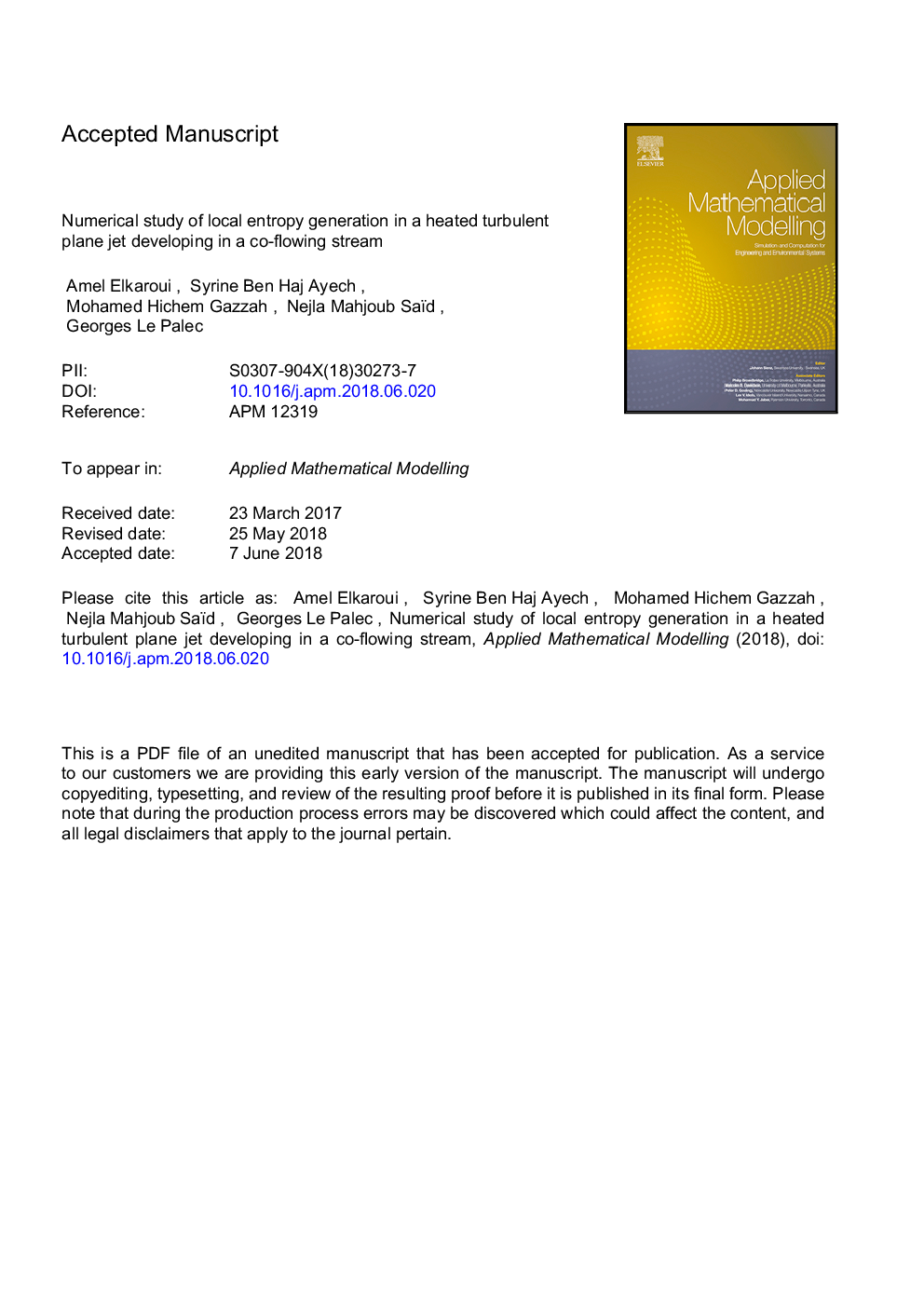| Article ID | Journal | Published Year | Pages | File Type |
|---|---|---|---|---|
| 8051123 | Applied Mathematical Modelling | 2018 | 45 Pages |
Abstract
The present paper numerically investigates the effects of a co-flowing stream on the mean and turbulent flow properties, air entrainment, mixing efficiency, entropy generation rate, and Merit and Bejan numbers of a heated turbulent plane jet emerging in a co-flowing stream. The angle of moving external stream (α) is varied between â10° andâ¯+â¯10°.The first order k-ε turbulence model was used and compared to the existing experimental data. The Finite Volume Method (FVM) was used to discretize the governing equations. The predicted results were consistent with the experimental data. The obtained results showed that the alfa angle directed away from the centerline enhances the mixing. Moreover, the entrainment hypothesis was introduced to describe the development of turbulent jets issuing in a co-flowing air stream. This hypothesis is related to the mass flow rate of the surrounding fluid entrained into the jet. So far, it is obvious that the co-flow has considerably decreased air entrainment.
Keywords
Related Topics
Physical Sciences and Engineering
Engineering
Computational Mechanics
Authors
Amel Elkaroui, Syrine Ben Haj Ayech, Mohamed Hichem Gazzah, Nejla Mahjoub Saïd, Georges Le Palec,
